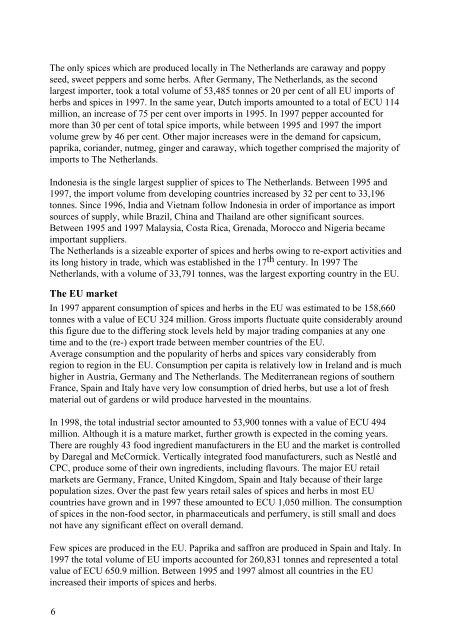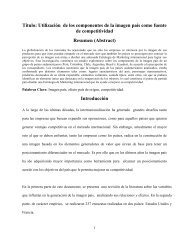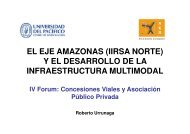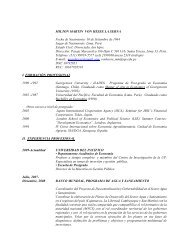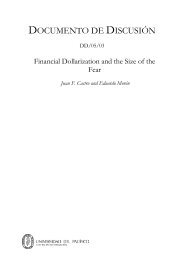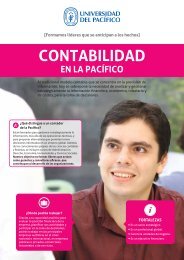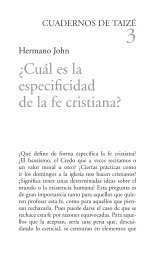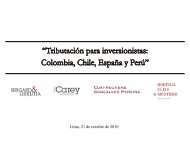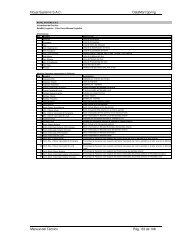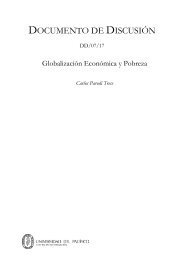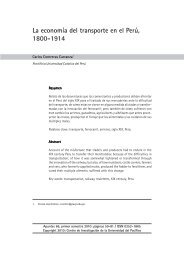You also want an ePaper? Increase the reach of your titles
YUMPU automatically turns print PDFs into web optimized ePapers that Google loves.
The only spices which are produced locally in The Netherl<strong>and</strong>s are caraway <strong>and</strong> poppy<br />
seed, sweet peppers <strong>and</strong> some herbs. After Germany, The Netherl<strong>and</strong>s, as the second<br />
largest importer, took a total volume of 53,485 tonnes or 20 per cent of all EU imports of<br />
herbs <strong>and</strong> spices in 1997. In the same year, Dutch imports amounted to a total of ECU 114<br />
million, an increase of 75 per cent over imports in 1995. In 1997 pepper accounted for<br />
more than 30 per cent of total spice imports, while between 1995 <strong>and</strong> 1997 the import<br />
volume grew by 46 per cent. Other major increases were in the dem<strong>and</strong> for capsicum,<br />
paprika, cori<strong>and</strong>er, nutmeg, ginger <strong>and</strong> caraway, which together comprised the majority of<br />
imports to The Netherl<strong>and</strong>s.<br />
Indonesia is the single largest supplier of spices to The Netherl<strong>and</strong>s. Between 1995 <strong>and</strong><br />
1997, the import volume from developing countries increased by 32 per cent to 33,196<br />
tonnes. Since 1996, India <strong>and</strong> Vietnam follow Indonesia in order of importance as import<br />
sources of supply, while Brazil, China <strong>and</strong> Thail<strong>and</strong> are other significant sources.<br />
Between 1995 <strong>and</strong> 1997 Malaysia, Costa Rica, Grenada, Morocco <strong>and</strong> Nigeria became<br />
important suppliers.<br />
The Netherl<strong>and</strong>s is a sizeable exporter of spices <strong>and</strong> herbs owing to re-export activities <strong>and</strong><br />
its long history in trade, which was established in the 17 th century. In 1997 The<br />
Netherl<strong>and</strong>s, with a volume of 33,791 tonnes, was the largest exporting country in the EU.<br />
The EU market<br />
In 1997 apparent consumption of spices <strong>and</strong> herbs in the EU was estimated to be 158,660<br />
tonnes with a value of ECU 324 million. Gross imports fluctuate quite considerably around<br />
this figure due to the differing stock levels held by major trading companies at any one<br />
time <strong>and</strong> to the (re-) export trade between member countries of the EU.<br />
Average consumption <strong>and</strong> the popularity of herbs <strong>and</strong> spices vary considerably from<br />
region to region in the EU. Consumption per capita is relatively low in Irel<strong>and</strong> <strong>and</strong> is much<br />
higher in Austria, Germany <strong>and</strong> The Netherl<strong>and</strong>s. The Mediterranean regions of southern<br />
France, Spain <strong>and</strong> Italy have very low consumption of dried herbs, but use a lot of fresh<br />
material out of gardens or wild produce harvested in the mountains.<br />
In 1998, the total industrial sector amounted to 53,900 tonnes with a value of ECU 494<br />
million. Although it is a mature market, further growth is expected in the coming years.<br />
There are roughly 43 food ingredient manufacturers in the EU <strong>and</strong> the market is controlled<br />
by Daregal <strong>and</strong> McCormick. Vertically integrated food manufacturers, such as Nestlé <strong>and</strong><br />
CPC, produce some of their own ingredients, including flavours. The major EU retail<br />
markets are Germany, France, United Kingdom, Spain <strong>and</strong> Italy because of their large<br />
population sizes. Over the past few years retail sales of spices <strong>and</strong> herbs in most EU<br />
countries have grown <strong>and</strong> in 1997 these amounted to ECU 1,050 million. The consumption<br />
of spices in the non-food sector, in pharmaceuticals <strong>and</strong> perfumery, is still small <strong>and</strong> does<br />
not have any significant effect on overall dem<strong>and</strong>.<br />
Few spices are produced in the EU. Paprika <strong>and</strong> saffron are produced in Spain <strong>and</strong> Italy. In<br />
1997 the total volume of EU imports accounted for 260,831 tonnes <strong>and</strong> represented a total<br />
value of ECU 650.9 million. Between 1995 <strong>and</strong> 1997 almost all countries in the EU<br />
increased their imports of spices <strong>and</strong> herbs.<br />
6


